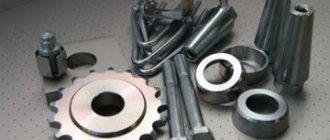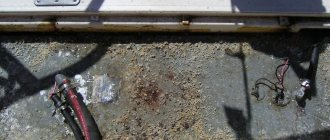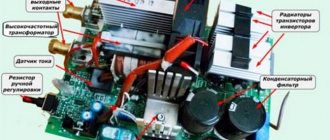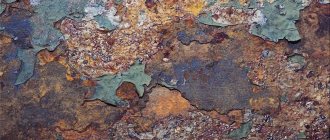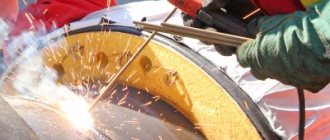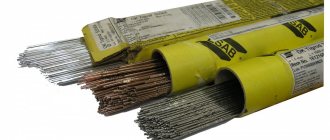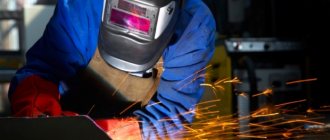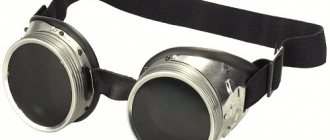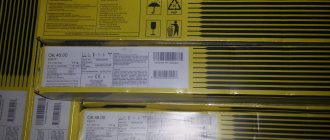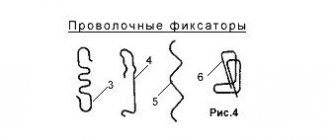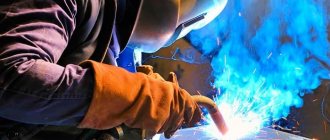How to reduce metal spatter during welding? This question is especially relevant for those surfaces to which high demands are placed - rubbing, or external ones, those that will subsequently be painted. The cardinal solution is to use protective chemicals, but with the help of other solutions you can achieve good results. We consider some of them below.
If welding spatter appears more frequently and there is more of it than usual, check the welding machine. The most common culprits for spatter associated with welding machines are:
low quality of welding current (current surges);
worn out nozzle or current tip;
quality of the welding machine.
Generally, a better quality machine means less splashing. It is almost impossible to avoid them on single-phase non-inverter type equipment. But welding inverters can significantly improve welding by stabilizing the characteristics of the welding current.
A worn-out nozzle or current tip does not provide a high-quality arc, which reduces the quality of the seam and increases the number of sparks. These consumables need to be replaced as soon as the first signs of wear are noticeable.
- High-quality welding materials
The amount of spatter is significantly influenced by the consumables that the welder uses in his work: electrodes, gas, flux. Reduce excessive sparks in the following ways:
welding with powdered flux;
welding with special grades of flux;
use of a protective environment from a mixture of carbon dioxide and argon;
refusal of electrodes with rutile coating.
- Proper preparation of material for welding
Thorough cleaning of the surface and removal of rust helps reduce the amount of splashes. Treatment with special compounds, which both reduce the number of sparks and protect the welded surface from the adhesion of splashes, helps dramatically.
- Special welding technique
To reduce metal spatter, experienced welders advise reducing the arc length, bringing the electrode as close as possible to the surface to be welded. You can also get rid of spatter by switching to TIG welding, however, this will increase the cost of welding and increase the time spent working with the part.
When performing welding work, spattering of the electrode metal and its sticking to the surfaces of the parts being connected or the seam are very often observed.
When accepting welding work, depending on the degree of responsibility of the structure, adhering drops of metal may be perceived as a serious defect.
Welding spatter protection is a definite concern for new welders. To prevent splashing, it is necessary to follow the technology and use protective compounds.
Reasons for appearance
Welding spatter usually occurs at the moment the arc is ignited, while the current is at its highest. When the electrode touches the connected parts at the moment of a short circuit, the metal of the electrode, subjected to an electrodynamic shock, scatters and settles in drops in the form of balls on the surface.
In some cases, welding the droplets to the base metal can be very strong. The defect is clearly visible. It can be removed by cutting off frozen drops or grinding with special tools.
In addition to this case, welding spatter most often occurs when welding semi-automatically using single-phase current during power surges.
The amount of spatter increases greatly if welding is performed on a rusty and dirty metal surface.
Thus, the main causes of welding spatter are:
- poor quality electrodes;
- incorrect choice of welding mode and parameters;
- low quality of preparation of products for welding;
- lack of protection of the product from sticking.
By eliminating all or part of these problems, you can ensure high quality work with a minimum amount of welding spatter.
Blog
Welding spatter is not only visually unsightly, but also affects the efficiency of the welding operation. In most cases, spatter must be removed to pass the company's quality inspection. Companies must also consider the cost of purchasing sanding equipment and abrasives to remove spatter, as well as maintenance and the associated safety risks of using sanders. Welding spatter inhibitor can prevent spatter from accumulating on the part, but it should be a last resort. Anti-stick compound (thermoset, thermoplastic polymer resin) increases operating costs and can cause weld defects such as porosity. It is also very messy and can stick to equipment, tools and floors. There are several ways to reduce spatter that can improve the appearance of welds and increase efficiency without the use of special compounds.
No. 1: Adjust wire and welding parameters.
The diameter of the wire used, as well as the parameters of the power source, in particular voltage, affect the formation of spatter. For example, larger diameter wires operating at lower welding parameters (lower voltage) tend to produce higher levels of spatter. In this situation, a combination of wire type and size along with certain welding parameters will work to transfer the short circuit. In this mode, the welding wire makes electrical contact as it touches the base material several times per second. Or the combination may go into globular transfer mode, causing large droplets of weld metal (larger than the wire diameter) to move along the arc. Both options may cause splashing. When welding using larger diameter wires with unsuitable settings, it may be advisable to reduce the wire size - for example from 1.2 mm to 1.0 mm. Smaller wires with more optimal settings allow for a spray pattern that sprays tiny droplets of weld metal in an arc. The result is a smoother arc and less spatter. The choice of shielding gas also affects the ability to achieve a smooth spray pattern. When welding with solid wire, a minimum of 80% argon must be used in the shielding gas mixture. Tubular wire, like metal core wire, requires a minimum of 75% argon with a CO2 balance. There is a trade-off with higher levels of argon: it provides a deep, narrow penetration into the joint, which may be less forgiving than a wider penetration that is less deep. Welding technologists will have to determine whether this is a bigger problem and cost factor than spatter removal.
#2: Avoid mill scale whenever possible.
Mill scale is a common problem in welding operations. This flaky surface of hot rolled steel is made up of mixed iron oxides and melts at a higher temperature than the actual base metal, essentially blocking the electric current of the arc during welding. The result is a cooler weld deposit that tends to "clump" rather than smoothly wet out and causes weld spatter. If possible, weld to a base material that is free of scale. This can be achieved by purchasing already cleaned rolled metal or by resorting to mechanical cleaning using a grinding machine or flap disk. Both options increase welding costs but can help avoid downtime due to spatter removal.
If welding dross-free materials is not possible, be sure to reliably ground the power source to the cleaned surface. Grounding on top of the dross may cause the arc to be interrupted, resulting in spatter. The use of certain filler metals, such as cored wire, can also help minimize problems with mill scale and spatter.
#3: Consider using cored wire.
When possible and practical for a welding application, switching from solid wire to cored wire is a good way to control spatter levels. Unlike solid wire with a solid cross-section, cored wire is tubular and filled with metal powders, alloys and arc stabilizers. These wires pass current through an outer metal sheath, which creates a wider cone-shaped arc for a wider penetration profile with little or no spatter. Flux cored wire also operates in the spray mode described earlier and can weld well through mill scale without pre-cleaning.
#4: Follow proper welder training and best practices.
Less experienced welders can often produce welds with a lot of spatter. As with any welding process, the key is to train the welder and follow some best practices. Using appropriate work and travel angles based on the application, wire type and joint configuration, and maintaining proper contact tip design can also reduce spatter and should be included in training programs for new welders. Additionally, using the correct consumables and replacing them when necessary can help reduce spatter. Taking steps to reduce weld spatter can help companies optimize welding processes and improve their efficiency.
#5: Use pulsed MIG welding.
If your welding operation uses a power source capable of pulsed MIG welding, or if you can purchase one, the waveforms it produces can help reduce spatter. Pulsed MIG welding is performed by switching between high peak and low background current approximately 30 to 400 times per second. When switching occurs, a drop of metal breaks off the wire during the peak current and moves into the weld pool. The background current is responsible for maintaining the arc during this process, but at a low heat input, which prevents metal transfer. Pulsed MIG welding works well with solid wire and metal core wire to reduce spatter and aid in off-position welding. Since there is virtually no spatter when using cored wire, the reduction in spatter is more noticeable when using pulsed solid wire MIG welding. Pulsed MIG welding is also relatively easy for beginning welders to learn, which is an added benefit for producing uniform, low spatter welds, and the process often allows welding through mill scale.
Support productivity, quality and cost savings.
Taking steps to reduce welding spatter can help companies optimize welding processes and increase their efficiency. This is especially true for orders requiring parts to be painted. By reducing or eliminating spatter, the part can be moved to the next process level faster. Reducing spatter can also improve weld quality, increase productivity and minimize unnecessary costs.
The article is based on the global experience and knowledge of ITW Welding.
Original article
Impact of equipment and technology
To protect against welding spatter, first of all, you need to pay attention to the use of high-quality equipment and electrodes. Good results can be achieved by using inverter semi-automatic machines.
When operating, these devices produce a very even current, which allows you to obtain a stable arc.
The cost of inverter semi-automatic machines reaches high values, but more expensive equipment does not always completely eliminate welding spatter.
Improvement in welding quality also occurs when switching to the use of three-phase current.
Working in a gas environment almost completely eliminates welding spatter. To do this, use a mixture of argon and carbon dioxide in proportions of 95% argon to 5% carbon dioxide.
When choosing parameters, you need to pay attention to the value of the welding current. It is its overestimated value that contributes to the formation and scattering of molten metal.
Electrodes must be used in accordance with the welding mode, their characteristics must correspond to the properties of the materials being welded, which provides protection against the formation of splashes. The use of wet, damp electrodes, as well as rods with cracked or peeling coating is not allowed .
When preparing products for welding, they should be thoroughly cleaned of dirt, rust, and soot. Oily parts must be degreased. The cutting of seam edges must be carried out in accordance with the requirements of the work technology.
By following the above tips, you can significantly reduce the amount of splashing. But small splashes still form, sticking to the metal.
If the design or structure is of a low degree of responsibility, and strict requirements are not imposed on its appearance, one could stop at using these measures. Otherwise, you have to eliminate the consequences.
Welding spatter coefficient
How to reduce metal spatter during welding? This question is especially relevant for those surfaces to which high demands are placed - rubbing, or external ones, those that will subsequently be painted. The cardinal solution is to use protective chemicals, but with the help of other solutions you can achieve good results. We consider some of them below.
If welding spatter appears more frequently and there is more of it than usual, check the welding machine. The most common culprits for spatter associated with welding machines are:
low quality of welding current (current surges);
worn out nozzle or current tip;
quality of the welding machine.
Generally, a better quality machine means less splashing. It is almost impossible to avoid them on single-phase non-inverter type equipment. But welding inverters can significantly improve welding by stabilizing the characteristics of the welding current.
A worn-out nozzle or current tip does not provide a high-quality arc, which reduces the quality of the seam and increases the number of sparks. These consumables need to be replaced as soon as the first signs of wear are noticeable.
- High-quality welding materials
The amount of spatter is significantly influenced by the consumables that the welder uses in his work: electrodes, gas, flux. Reduce excessive sparks in the following ways:
welding with powdered flux;
welding with special grades of flux;
use of a protective environment from a mixture of carbon dioxide and argon;
refusal of electrodes with rutile coating.
- Proper preparation of material for welding
Thorough cleaning of the surface and removal of rust helps reduce the amount of splashes. Treatment with special compounds, which both reduce the number of sparks and protect the welded surface from the adhesion of splashes, helps dramatically.
- Special welding technique
To reduce metal spatter, experienced welders advise reducing the arc length, bringing the electrode as close as possible to the surface to be welded. You can also get rid of spatter by switching to TIG welding, however, this will increase the cost of welding and increase the time spent working with the part.
source
Anti-caking agents
Sometimes removing splashes of molten metal is impossible using mechanical methods, that is, cutting down or grinding. Problems arise due to the location of the seam in hard-to-reach places.
In this case, the surfaces of the parts to be joined by welding are pre-treated around the weld area with means to protect against welding spatter. Such products are a paste or liquid against the adhesion of molten metal.
Currently, there are many different means of protection. The retail network has ready-made products from the BINZEL, ESAB, E-WELD, and INDUSVAR brands.
According to the method of application, they are divided into:
- produced in the form of liquids packaged in canisters and bottles. The protection is applied by brush or spray through a spray bottle;
- produced in the form of aerosols in special bottles;
- in the form of pastes, packaged in metal or plastic jars with a wide neck for ease of use.
Each product must be used in accordance with the manufacturer's instructions.
Very often, experienced welders use their own compound recipes, developed over the years, to prevent the adhesion of spatter.
As a means of protection, you can use a solution of chalk in water. It is desirable that the consistency be close to paste. Using a brush, this solution is used to cover the part around the future seam, but the edges themselves must remain clean.
After welding work, it is necessary to thoroughly clean the surfaces of the seam and metal from the applied product. Many anti-splash formulations include oils, greases, and other substances that significantly reduce the adhesive properties of the coating.
If necessary, surfaces must be degreased, which improves the quality of further processing of products and structures.
Hi all! I'm already exhausted and don't know what to do. In general, I have a semi-automatic BestWeld Master 132A. Does not cook in a protective gas environment. It welds fine with flux-cored wire, but it craps on the seams like a bird, and doesn’t want copper-coated wire in carbon dioxide. When you try to weld copper-plated with carbon dioxide, the welding simply spits out and does not weld anything. You just end up with drops of scale on the metal and that’s it. I've already tried everything, played with the settings, measured the voltage, and changed the polarities. There's no point. I’m already sinning with bad gas... Tell me, who has had this happen!
Deposition factor
The KN value is in most cases lower than the melting coefficient. The reason is the loss of metal during welding. Sometimes the KN is equal to the KR if the electrode coating contains iron powder. The presence of the latter can lead to a predominance of the deposition coefficient over the RC. CN is affected by:
- current used;
- the type of wire used to produce the rod;
- spatial position in which welding occurs.
There are three types of coating for welding rods:
- increased. The KN of such rods is from fifteen to sixteen g/Ah. Used exclusively for cooking in the lower position, to obtain long connecting seams;
- average. KN – from eight to nine g/Ah. The deposition coefficient of electrodes E46, for example, allows us to classify them as this type of product. It is permissible to carry out welding from any position;
- big. KN – up to twelve g/Ah. It is recommended to use the bottom position, but other options are acceptable.
To determine KN, it is necessary to divide the mass of metal deposited onto the weld over a certain period of time by the current used for welding (measured in amperes). Weight is indicated in grams. The coefficient value is indicated in grams per ampere hour. For example, the deposition rate of UONI 13 55 electrodes is 9.5 g/Ah.
Knowledge of CN is important for preliminary preparation of the number of electrodes required for the procedure. This allows for continuous welding, increasing productivity. The quality of the future seam depends on the KN. Knowing this parameter, the welder is able to apply the optimal position for welding work. Regulates the deposition rate of electrodes according to GOST 9466-75.
Melt coefficient
The welding device melts during the welding process. This allows the formation of seams. Each product is melted depending on a number of parameters. This process is affected by:
- composition of the wire from which the product is made;
- the type of coating applied to it;
- welding mode;
- connection type.
Not all of the product material is used to form the seam. A significant part of it is not transferred to the seam. It's connected with:
- splashing of molten metal;
- metal evaporation;
- fumes arising from the burning of the welding arc.
This indicator is calculated using the following formula – Мрм/(St*Вр).”
In this formula: Mpm – mass of metal melted over a certain period of time (in grams); St – welding current (in amperes); Вр – the period of time during which the arc was burning (in hours).
There are special tables that indicate the parameters described above for each product. A similar table will be given below. However, specialists rarely resort to their use. In most cases, KR and KN are established experimentally, through preliminary testing of products.
Specific indicators
The KR and KN indicators, as mentioned earlier, are different for each product and depend on many parameters. Thus, the deposition coefficient of MP-3 electrodes differs from that of UONI 13/55. The manufacturer of the rods used for welding specifies these parameters. You can view the values for individual products using the following table:
weld metal (grams)
| 9,5 | 1700 |
| 10 | 1600 |
| 8,5 | |
| MR-3 | 8,5 |
| OK-46 | 8,5 |
| 15 | 1300 |
| OMA-2 | 8 |
| 9,5 |
